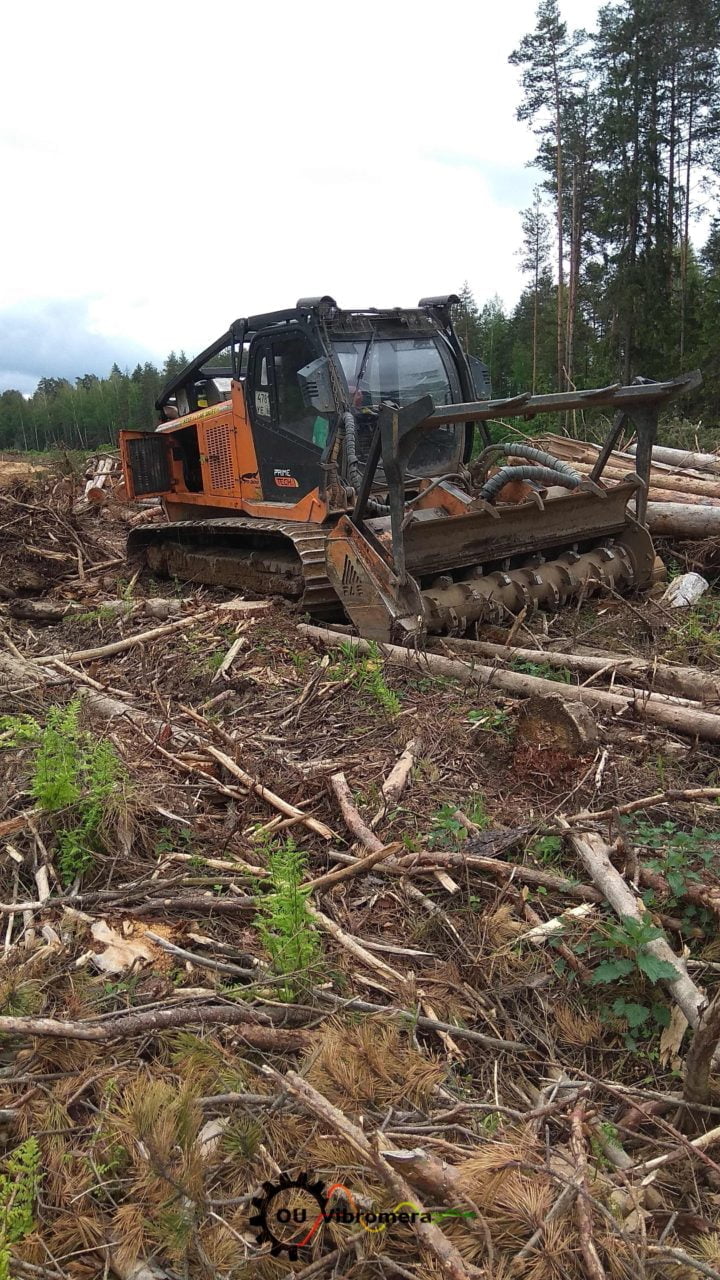Not Just Balancing: Solving the Issue of Increased Vibration in the PT300 Forestry Mulcher
Forestry mulchers like the PT300 are powerful machines that clear forest areas for subsequent road construction. Strong vibration is a common and unsafe occurrence in industrial equipment. Promptly identifying the causes and taking corrective measures not only extends the equipment's lifespan but also ensures uninterrupted and safe operation.
Vibration in the Forestry Mulcher: A Symptom, Not a Diagnosis
When the PT300 forestry mulcher began showing intense vibration, the initial assumption was the need for rotor balancing. However, it is crucial to recognize that vibrations can be caused by factors other than imbalance. Common causes of vibration in industrial equipment include:
- - Worn bearings: Damaged bearings create increased stress, often being a frequent source of vibrations.
- - Misalignment of shafts: Inaccurate alignment of motor and tool shafts can cause significant vibrations.
- - Weakened mounts: Fixtures weakened from prolonged use can lead to incorrect positioning of units and excessive vibrations during operation.
- - Other mechanical damages: Cracks in the frame, worn belts or chains, hydraulic malfunctions – all these are possible primary causes of vibrations.
Finding the True Cause: Diagnosing Vibrations in the PT300 Forestry Mulcher
To eliminate increased vibration in the PT300 and avoid unnecessary adjustments, it was essential to first identify the main cause. For this, the Balanset-1A vibration analyzer, designed for diagnosing and balancing rotating units, was employed.
- - Vibration Analysis: The team conducted a thorough initial survey of the mulcher using Balanset-1A.
- - Diagnosis - Damaged Bearings: The survey results revealed that damaged rotor bearings were causing increased vibration.
Action Plan: Addressing the Root Cause of Increased Vibration
Replacing Bearings: The priority was to address the true root cause - the worn bearings. Both damaged bearings were replaced with new ones.
Reassessment: After replacing the bearings, specialists rechecked the vibration level. Measurements met the standards, requiring no further balancing. This emphasizes the importance of identifying the cause before resorting to additional procedures.
Rotor Balancing: Although replacing the bearings significantly reduced vibration, to further optimize the mulcher's operation and prevent future increased loads, the rotor underwent a balancing procedure using Balanset-1A.
Outcome
The comprehensive approach significantly reduced vibration in the PT300 forestry mulcher. First addressing the bearing issue, followed by preventive rotor balancing, ensured the equipment's smooth operation and reduced future maintenance costs.
Benefits of Using Balanset-1A for Diagnostics and Balancing Equipment
- - Rapid Diagnosis: Balanset-1A not only measures vibration but helps accurately determine the cause of excessive vibrations – imbalance, misalignment, bearing damage, etc.
- - High Precision: Accurate sensors and algorithms allow Balanset-1A to correctly calculate the corrective mass and its placement.
- - Versatility: Balanset-1A is an indispensable tool for analyzing and preventing faults in various units with rotating elements – rotors, pulleys, fans, etc.
Conclusion
The case of the PT300 forestry mulcher underscores the importance of not only balancing but also comprehensive vibration diagnostics in industrial equipment. Proper diagnosis is key to effective repair work, saving on spare parts, and reducing downtime. This example serves as a vivid illustration of the necessity for active and knowledgeable maintenance of ventilation systems to foster a pleasant environment and optimize resource use in public spaces.

0 Bình luận